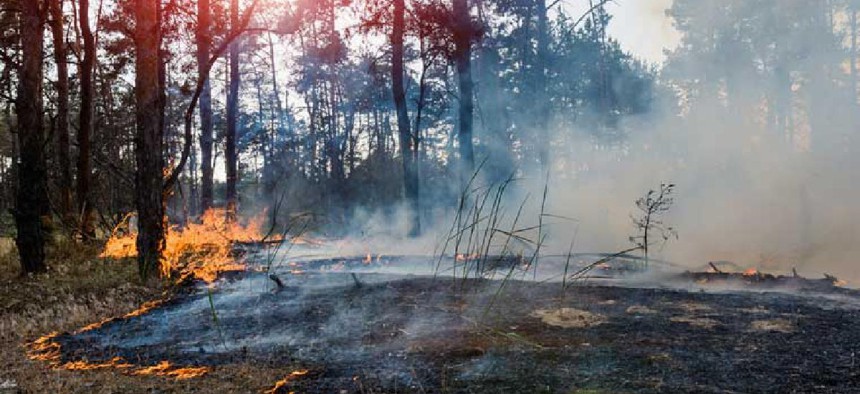Can IoT sensors spot wildfires sooner?


Connecting state and local government leaders
The Department of Homeland Security’s Science and Technology Directorate field tested wildfire sensors to evaluate their smoke detection and alert capabilities.
Record-setting temperatures in the Pacific Northwest and the increasing threat of wildfires have ramped up the urgency for early-detection technology.
As part of the Smart Cities Internet of Things Innovation (SCITI) Labs initiative, the Department of Homeland Security's Science and Technology Directorate partnered with first responders in California to run field tests in a controlled, outdoor environment at the Dye Creek Preserve. The June tests were the second phase of the division’s wildland-urban interface sensor technology program, which is reviewing a variety of prototype sensors and platforms to evaluate their smoke detection and alerting capabilities.
The sensors had already been validated in indoor and (largely) laboratory settings, with S&T partnering with the consulting and engineering firm Jensen Hughes to recreate levels of smoke concentration found during the early stages of a wildfire. Now, S&T has deployed the sensors at various distances from ignition points at prescribed burns so scientists can better assess their capabilities.
S&T’s commercial partners’ sensors address different aspects of wildfire detection.
Ai4 Technologies uses artificial intelligence for visual analysis of satellite imagery and LiDAR data. N5 Sensors Inc., Valor Fire Safety and Breeze Technologies measure air quality using a combination of thermal imagery and photoelectric sampling to detect common pollutants and identify smoke in the air. Additionally, S&T used Blue Sky Modeling’s framework to predict how smoke spreads through woodland areas at various stages of a fire.
The tests simulated scenarios of burning vegetation at various levels of heat, wind and air flow. The sensors were able detect the smoke from a wildfire at very low levels of concentration, officials said.
“Through a combination of particulate, air quality, optical sensing, thermal imagery and photoelectric sampling, as well as the development of detection algorithms, this sensor technology will assist with early warning for wildfires, especially those near communities that have been devastated by these events in the past,” S&T Program Manager Jeff Booth said.
This effort to automate early detection primarily serves to aid state and local fire services and residents in fire-prone areas. O fficials hope that controlled, real-world testing will help the sensor manufacturers and government partners more easily spot wildfires before they get out of control.
The tests were conducted in partnership with the California Department of Forestry and Fire Protection and The Nature Conservancy. Additional observers included representatives from the California Governor’s Office of Emergency Services and the U.S. Fire Administration.
“Working with our partners from FEMA, USFA, CAL FIRE and The Nature Conservancy has enabled research progress, even with the constraints of COVID-19,” Booth said. “These partners have been instrumental in the success of the program, and we will continue to support them in their emergency response mission through these SCITI Labs research initiatives.”




